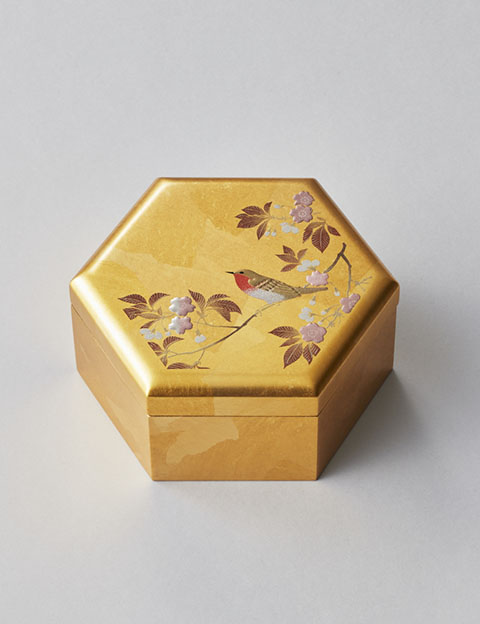KANAZAWA Haku (Gold Leafs)

The history of Kanazawa gold leaf can be traced back to the latter half of the Sengoku era (1428-1573), when Maeda Toshiie, the feudal lord of the Kaga clan, sent a document to Japan while on a campaign in Korea, explaining how to produce gold leaf. The Shogunate subsequently established a guild for the workers and controlled the production and sale of gold leaf throughout the country.
After the Meiji Restoration in 1868, government control of the craft was abolished and the gold leaf craftsmen of Kanazawa took the opportunity to further develop their techniques as well as expand production. With its reputation for high quality, Kanazawa remains the top producer of gold leaf in the country.
Gold leaf is between 0.1 and 0.2 µm thick. For this reason, it can be applied to virtually any material, including metal, ceramic, lacquerware, wood and paper, as well as designs of any complexity. In addition, none of gold’s raw luster is lost during application, resulting in products of captivating beauty and splendor. Large amounts of gold leaf are used on shrine and temple buildings as well as household Buddhist altars. Items produced today include signs, individual carved characters and mizuhiki decorations for gifts and the finest art mountings.
Feature
Gold leaf is extremely thin at just 0.1 to 0.2 µm, allowing it to be applied to a wide variety of materials and decorative patterns, no matter how intricate. Losing none of its luster over time, traditional craft products covered in beautiful, elegant gold never cease to move people’s hearts.
How to make
Gold leaf is made by adding small amounts of silver to gold to create an alloy, which is then pressed and flattened to just a hundredth of a millimeter using a rolling mill. The alloy is then spread between two layers of a specially prepared paper called sumiuchi-shi and beaten to a thousandth of a millimeter, creating a substance called uwazumi, which in turn is spread between two layers of hakuuchi-shi paper and pressed with a foiling machine to achieve its final thickness.

